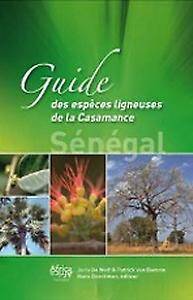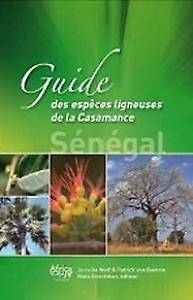
- Afhalen na 1 uur in een winkel met voorraad
- Gratis thuislevering in België vanaf € 30
- Ruim aanbod met 7 miljoen producten
- Afhalen na 1 uur in een winkel met voorraad
- Gratis thuislevering in België vanaf € 30
- Ruim aanbod met 7 miljoen producten
Zoeken
Guide des espèces ligneuses de la Casamance
(Sénégal)
Joris De Wolf, Patrick Van Damme
Paperback | Frans
€ 29,00
+ 58 punten
Omschrijving
This guide is the culmination of an in-depth study of the vegetation of Moyenne Casamance, which covers roughly the administrative territory of Kolda in Senegal. The guide is based on botanical knowledge acquired on-site over two years: almost all ligneous species encountered (156) are described. This does not restrict the guide's utility to Moyenne Casamance, whose flora is quite similar to that of the entire region and subject to the same Sudano-Guinean climate.
Fieldwork drew largely on an identification key of major African tree species in Casamance, created by J. De Wolf and other collaborators of Professor P. Van Damme of the University of Ghent, and improved during field expeditions in Senegal and Mali by the Royal Museum for Central Africa.
The authors aimed to create a practical field guide with an identification key based on plant vegetation characteristics. Moreover, species descriptions include information on flowers and fruits, species budding and ecology, and even uses. A partial key based essentially on floral characteristics proved a necessary addition for identifying flowering species stripped of their leaves.
Fieldwork drew largely on an identification key of major African tree species in Casamance, created by J. De Wolf and other collaborators of Professor P. Van Damme of the University of Ghent, and improved during field expeditions in Senegal and Mali by the Royal Museum for Central Africa.
The authors aimed to create a practical field guide with an identification key based on plant vegetation characteristics. Moreover, species descriptions include information on flowers and fruits, species budding and ecology, and even uses. A partial key based essentially on floral characteristics proved a necessary addition for identifying flowering species stripped of their leaves.
Specificaties
Betrokkenen
- Auteur(s):
- Uitgeverij:
Inhoud
- Aantal bladzijden:
- 176
- Taal:
- Frans
Eigenschappen
- Productcode (EAN):
- 9789074752589
- Verschijningsdatum:
- 20/02/2000
- Uitvoering:
- Paperback

Alleen bij Standaard Boekhandel
+ 58 punten op je klantenkaart van Standaard Boekhandel
Beoordelingen
We publiceren alleen reviews die voldoen aan de voorwaarden voor reviews. Bekijk onze voorwaarden voor reviews.











